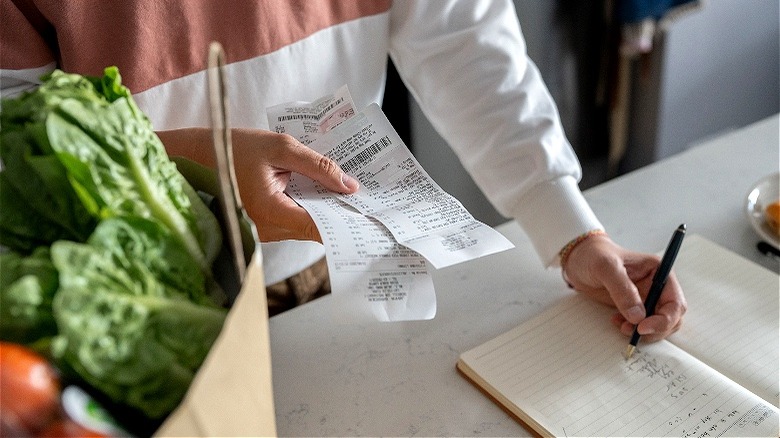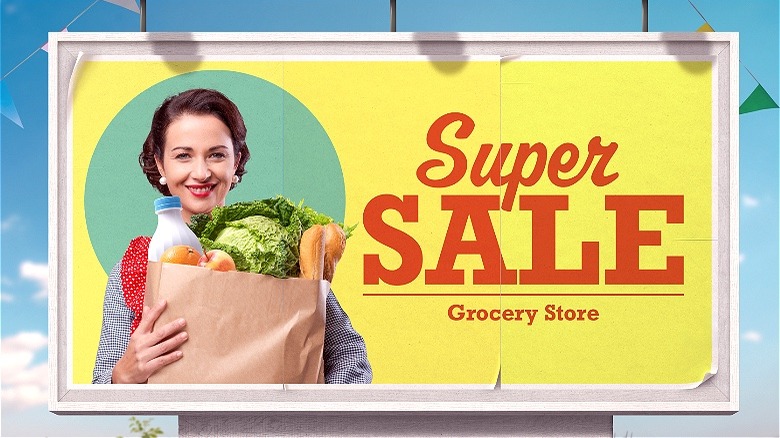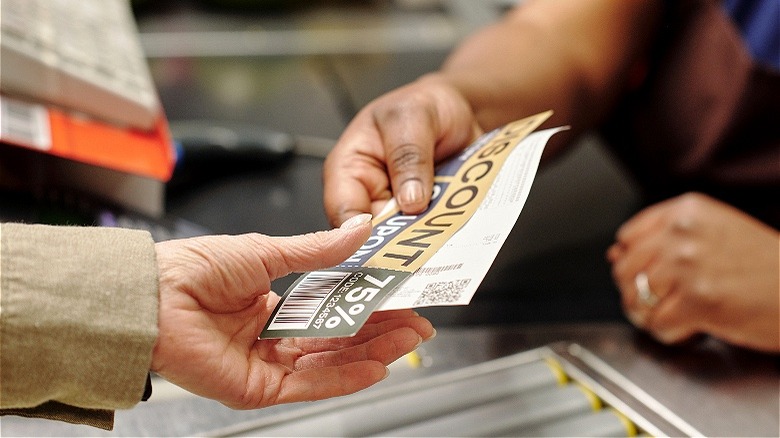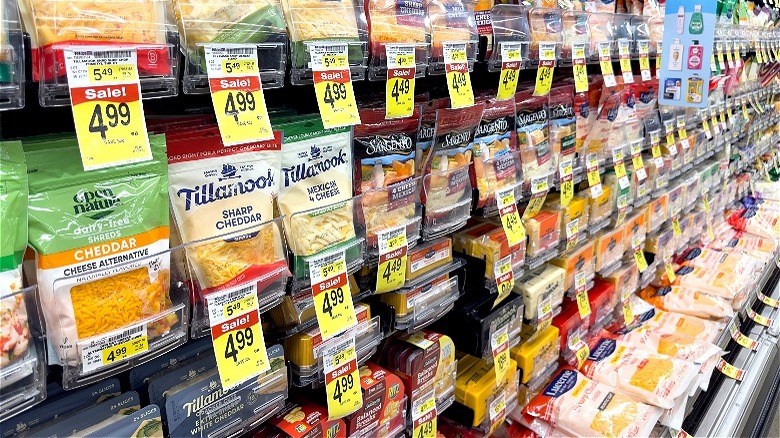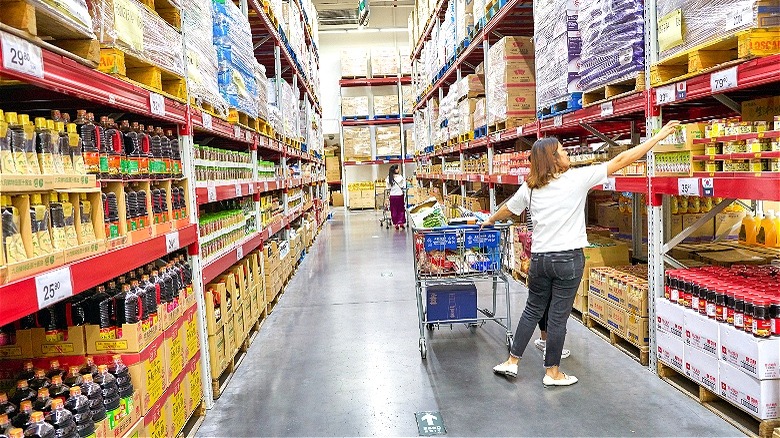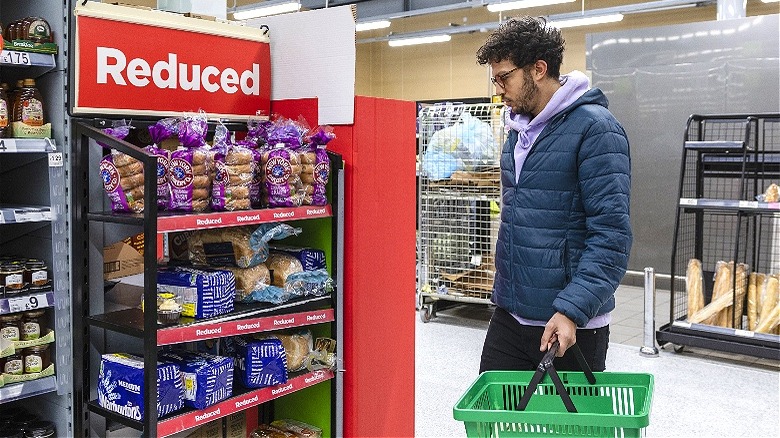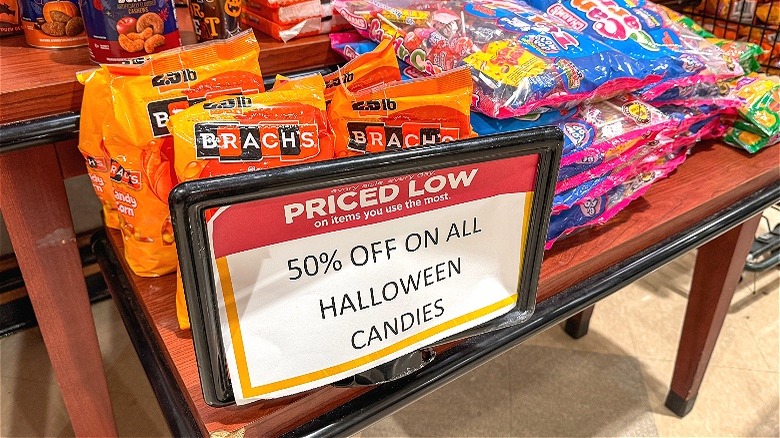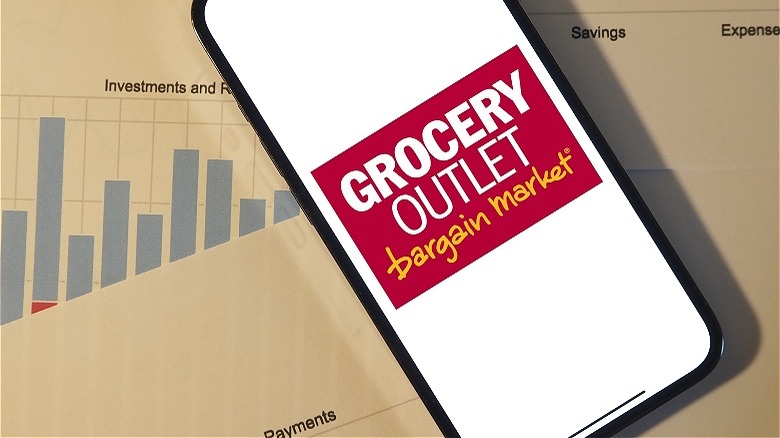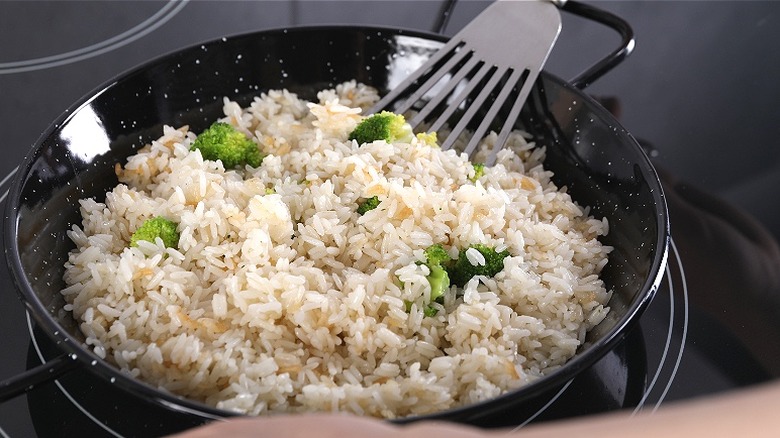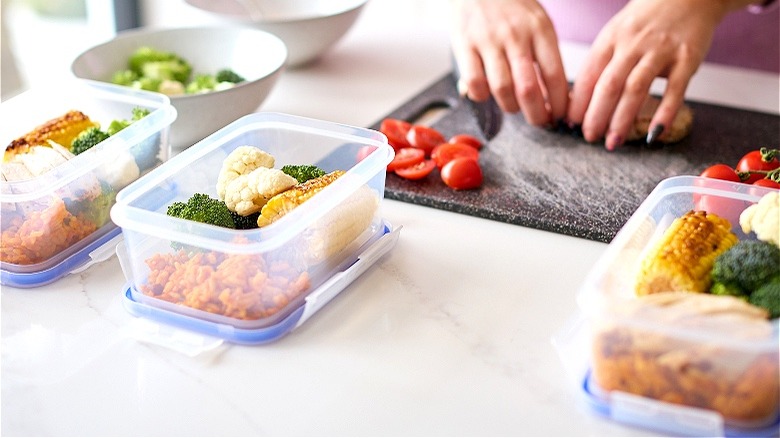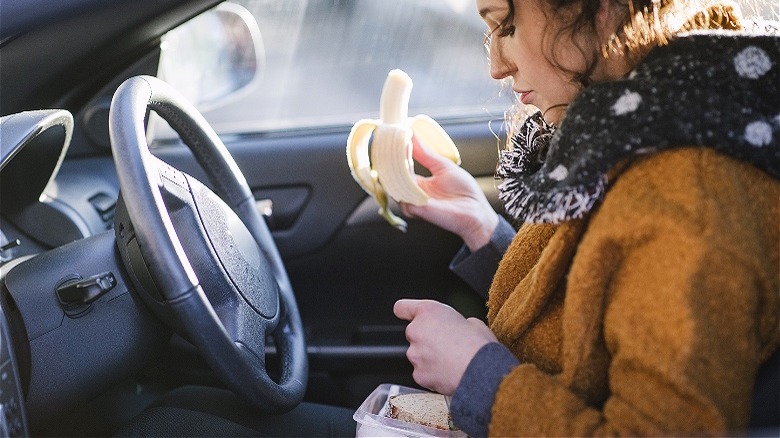Grocery Shopping Strategies That Save You Money
Whether you buy groceries for just you or for a multi-person family, chances are that buying food at the supermarket takes a big bite out of your weekly or monthly budget. After all, food is expensive and prices have been on the rise. A 2024 Credit Karma survey revealed that 80% of Americans report experiencing a significant increase in the price of groceries over the last several years. Expensive or not, though, food is a necessity for all of us. You can't stop buying groceries altogether, but you probably can cut your spending without sacrificing quality of life by making some tweaks to the way you shop for food and prepare meals.
If you're ready to reduce the amount you're spending on groceries by adopting smarter supermarket shopping strategies to help you make the most of your food budget, you've come to the right place. Explore the tips below and select a few to start with. Once the strategies you select initially have become part of your ordinary approach to food shopping, add in a few more, then keep going until you've developed a high level of cost-conscious supermarket savvy. Soon, you'll be maximizing every penny of your grocery budget and eating better than ever.
Build and use a price book
Putting together a price book is a great way to keep track of grocery costs and to recognize a great deal when you come across one. Using a price book is a way of tracking the real cost of items that you purchase on a regular basis. You can keep a paper-and-pencil price book or build one digitally. A spreadsheet application like Excel or Google Sheets is ideal for creating a price book because it's easy to edit and sort information in this format.
Building a price book starts with keeping your grocery receipts for a month or longer, and then going through them to identify the items you purchase regularly. List those items in your price book, along with the price you paid, the product size, the unit price (which you will need to calculate), and when the purchase was made. Once you have your price book set up, update it when you come across a cheaper price for an item. Over time, this document will become a guide you can use to know whether to make a purchase now or if you should wait for a sale, as well as to recognize when you come across an amazing deal to stock up on.
Stock pantry items on sale
Speaking of stocking up, you can save some cash if you avoid waiting until you run out of a staple pantry item before buying another. Putting yourself in a must-buy-today scenario can cause you to pay more for staple items than you really have to. When you wait until you run out of something that you use regularly to buy a replacement for it, that puts you in a situation of having to pay whatever the price is at that point in time. Unless your timing is impeccable from a frugality perspective, chances are that you won't run out of rice, flour, baking powder, or other pantry staples when they're on sale for a really great price.
Instead of putting yourself in a must-purchase-right-now-regardless-of-price scenario, stay alert to when these items go on sale and stock up so that you have at least a few of each on hand at all times. This will help you capitalize on great deals and keep you from running out of basic pantry items that should always be present on your shelves.
Shop around for the best deals on groceries
Buying all kinds of groceries on sale is a great way to cut your grocery costs. You don't need to limit sale-driven stocking up to pantry staples. Stock up on grocery items that you have room to store whenever you come across a great deal, and even adjust your meal planning process to decide what you're going to cook this week or month based on what's on sale at a particular point in time, especially when you luck into amazing buy-one-get-one-free sales.
You can flip through weekly sales on local supermarket apps one at a time or use the Flipp website or app to view all current circulars for supermarkets in your local area by entering your zip code. Knowing what is on sale and where can help you plan your grocery shopping around other activities to make the most of your time and fuel expenditure and keep you from paying more for an item at one place while it's on sale at a different store for a much better price.
Stack coupon, rebates, and loyalty card discounts
Weekly supermarket sales are a great place to identify promotional pricing, but don't stop there when you're looking to make the most of your grocery budget. Take a deeper dive into cutting your food bill by also scouring for coupons and rebate opporunities, as well as looking for ways to capitalize on every potential savings opportunity provided via a particular store's loyalty program and shopping app. Once you identify sale items you'd like to buy that week, check the manufacturer's website and the ibotta app to see if there are any coupons or rebates available there to maximize your savings, as well as special offers for other items you need that aren't on sale.
Additionally, log in to the loyalty program app for each store you plan to visit to see if there are any additional savings offers, such as dollar amount or percentage off with a minimum purchase, or certain days to earn extra fuel rewards or points toward discounts in exchange for shopping. The more deals you can stack on top of sale items you plan to purchase, the further your money will go.
Choose store brands rather than brand names
Sale prices are great, but sometimes promotional pricing on name-brand grocery items is still higher than the price of store-brand or generic products. After all, someone has to cover the marketing costs associated with making sure that consumers have top-of-mind awareness of the brand name. Be sure to compare prices before you snag a name-brand selection you saw highlighted in a store's sale circular, just in case you might save even more by opting for a less well-known label.
Offering small reductions on well-known brands is just one sneaky way grocery stores trick shoppers into spending more. After all, many store-brand grocery items can cost up to 25% less than name brands. And you won't be sacrificing quality in exchange for saving some money. Store-brand foods are generally just as high in quality as their name-brand competitors. Not only that, it seems that some private-labeled supermarket items are actually produced and packaged by the very same manufacturers that make much pricier brand-name counterparts.
Focus on unit pricing
The size of the package doesn't always directly relate to the quantity of food that's in the package, and the price label on the shelf doesn't always reflect the whole story. The next time you're in the dairy section at the supermarket, look at the various packages of shredded or sliced cheese. Some will have eight ounces, while other packages of the same size and possibly even the same number of slices will have only six or seven ounces. You have to look very closely to confirm not only what you are getting for your money, but how much. And not just with cheese. This happens with all kinds of food products, household goods, cosmetics, and more. That's why it's so important to focus on unit pricing, such as the cost per ounce or the cost per pound, when you're comparing the prices of similar packages of food. Some stores provide that information on the label on the shelf, but they don't always do so consistently. Fortunately, your cell phone has a built-in calculator, so you can do the math for yourself.
Split bulk purchases with friends
Strategizing to make the most of supermarket sales and special offers can help you score rock-bottom grocery store prices, but it's still possible to get even better deals by buying large quantities of food in bulk packaging. If you aren't feeding a whole lot of people, bulk quantities might not be ideal for you, even if you like the idea of bulk purchasing discounts. There's an easy way around that. Simply join forces with a few friends to buy in bulk together. You could chip in for a membership to a local warehouse club or place a joint order to Azure Standard or another grocery co-op that delivers bulk quantities to your area or sells locally. Order items that each of you use, then divide the bulk packages into smaller portions when they arrive and split the cost proportionately. You can even take turns doing the shopping. What a simple way to get the benefit of buying in bulk without having to stockpile a huge quantity of each item you purchase.
Scour the store for marked-down items
Whether you're shopping in a traditional grocery store or from a warehouse club or co-op, searching the store or website for clearance grocery items can pay big dividends. Grocery stores often mark down meat in the butcher case and deli section a day or two before the best-by date on the package, when it's still perfectly good to eat within a few days or freeze. They do the same with packaged salad greens, bread, and shelf-stable foods that are soon to be out of date. If you like this savings strategy, it's a good idea to get to know a few store employees well enough for them to let you know when they typically do mark-downs.
Meat and produce reductions are usually done weekly, but they're not the only way to score on clearance goods at the grocery store. You can also sometimes luck into clearance pricing on discontinued or closeout items, though this won't happen as regularly as price reductions driven by pending expiration dates. Whatever the reason a product is marked down, buying clearance items is a great way to reduce your supermarket spending while stocking up on perfectly good products at below-retail prices.
Take advantage of post-holiday food sales
Seasonal or holiday snacks and treats taste just as good after the holiday or special occasion they were packaged for as they did on the big day. Even so, stores typically offer deep discounts on seasonally packaged items as soon as the celebration for which they are being promoted has passed. From discounts on Halloween, Christmas, Valentine's Day, and Easter candy to marked-down price or baking mixes specially packaged for Thanksgiving or other special occasions, and more, seasonal sales provide a great way to stock up on treats and otherwise pricy convenience items at a deep discount. You can save a lot of cash on these kinds of items by heading to the store a day or two after a big event that's celebrated with food in seasonal packaging. Supermarkets and other stores that carry seasonal food items typically mark them down by 50% the day after the event, with even deeper discounts for remaining items after a few days. What a great, affordable way to buy treats that could otherwise bust your grocery budget.
Shop for groceries at surplus or salvage stores
Another grocery savings strategy involves changing your mindset about where to buy groceries. Sure, supermarkets, warehouse clubs, and grocery co-ops are obvious choices, and they're where you're likely to find the most extensive selection. However, sometimes you might actually find the best deals and surplus or salvage stores that specialize in or carry grocery products. For example, Grocery Outlet and United Grocery Outlet are non-traditional grocery chains under common ownership that offer fantastic hit-or-miss deals on surplus, salvage, or closeout groceries, such as items near expiration or ones that have undergone packaging changes or been discontinued. Martie.com is an online retailer with a similar strategy, but solely for shelf-stable products. Discount retailers like Ollie's Bargain Outlet and Big Lots are also great places to find closeout grocery items with price points lower than you're likely to find in a regular grocery store.
Buy ingredients rather than packaged items
If you're in the habit of purchasing pre-made items or convenience foods, making adjustments to what you buy is another great way to reduce your spending on groceries. It's a lot cheaper to purchase the ingredients to assemble meals from scratch than it is to purchase ready-made meals. Frozen, pre-made convenience items can cost up to 10 times more than it costs to prepare similar items from scratch. For example, a $2 per box seasoned rice mix with 2.5 servings works out to 80 cents per serving for a side dish. If you purchase plain rice in bulk to keep on hand in your pantry along with some basic seasonings, you can whip up a comparable side for about 8 cents per serving. That's a huge difference in price. Plus, the homemade version will probably be better for you, as it'll have much less sodium and no preservatives or other unnecessary ingredients.
Prep freezer meals
Don't want to have to cook from scratch every day? You don't have to spend hours cooking on the regular to wean yourself off the expense of convenience grocery items. Put the combination of your sale shopping, always-stocked pantry, bulk buying, and focus on ingredients rather than convenience foods to stock your freezer with scratch-made meals that you prepare in bulk and freeze so you always have ready access to thaw-and-heat meals made to your liking. Consider setting aside one day per month to stock your freezer with enough meals to tide you over until next time. You'll be amazed at the difference this strategy can make.
When your freezer stays well stocked with homemade goodness that doesn't require much work to have ready, this can help you save quite a bit of money. For example, you'll be less likely to go through a fast food drive-thru or stop by a restaurant for dinner at the end of a busy day when you don't feel like cooking if you know that an already-assembled home-cooked meal is waiting for you at home. You're also less likely to find yourself making unplanned trips to the supermarket in between well-thought-out sale-shopping expeditions, which can prevent full-price shopping and unnecessary impulse purchases.
Eat before going to the grocery store
When frugal grocery shopping is your goal, it's important to avoid going to the supermarket on an empty stomach. When you're hungry and surrounded by food everywhere you turn, it can be really hard to resist impulse purchases of items that you don't really need, especially high-priced convenience goodies that you could nosh on immediately. Chips, crackers, pre-made cookies, and pricy deli items somehow just find their way into your cart when your tummy is rumbling as you walk through the aisles.
That's why shopping on an empty stomach could cost you a lot of extra money at the supermarket. Rather than putting yourself at risk of hunger shopping, you should always eat something just before you go to the grocery store. Take something with you to nosh en route to the store if you don't have time to eat before leaving your home or office to go shopping, or keep a few shelf-stable snacks, like packets of nuts, in the car for just such an occasion. Shopping on a full stomach won't guarantee that you won't splurge on a few expensive convenience items that aren't on your shopping list, but it can surely help make it easier to resist the urge.

